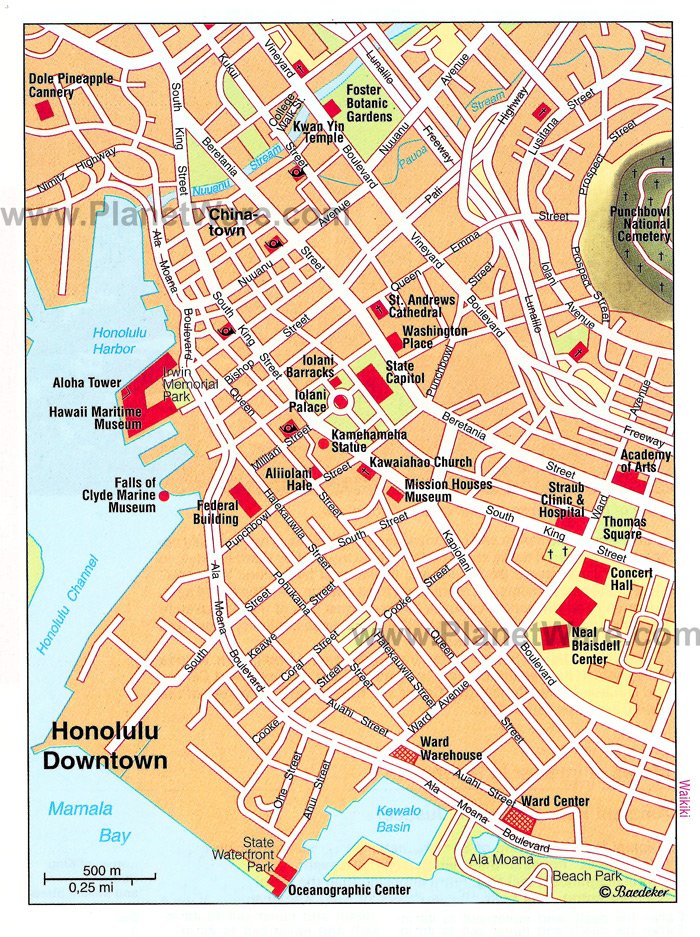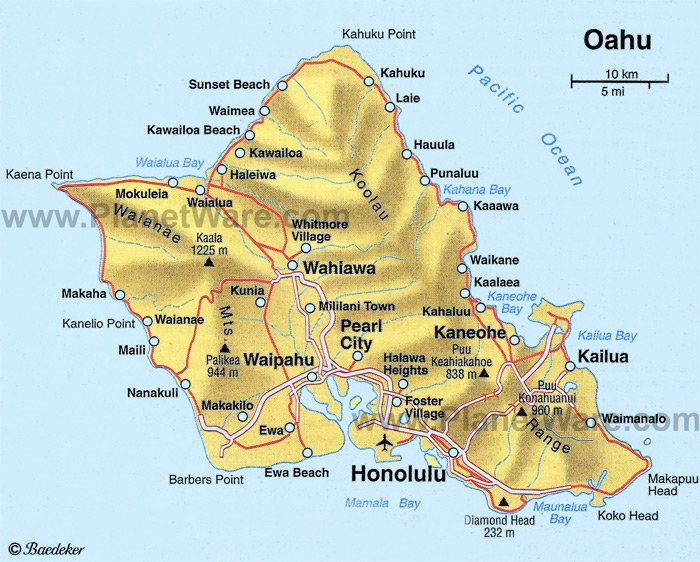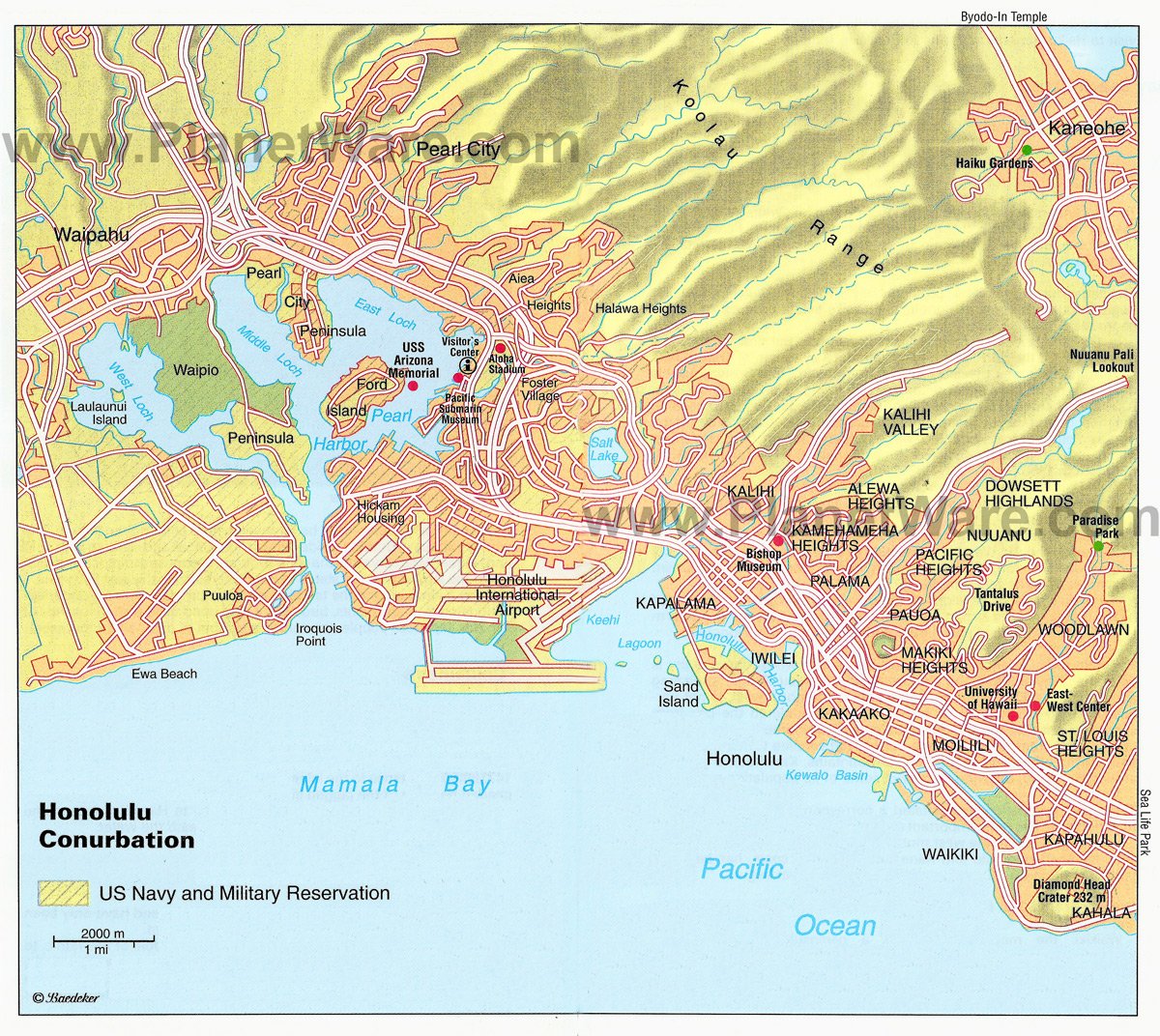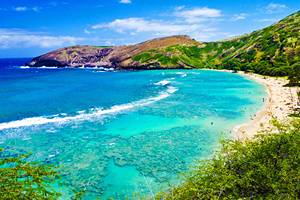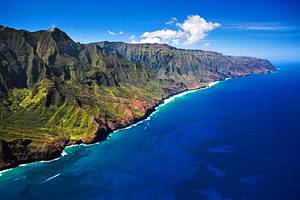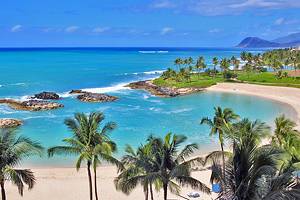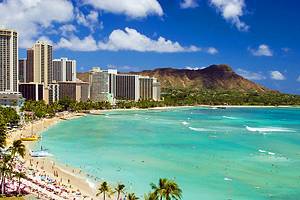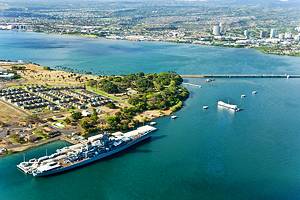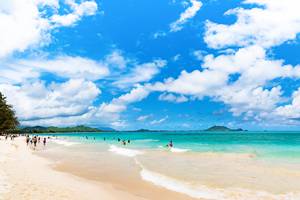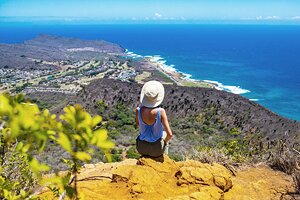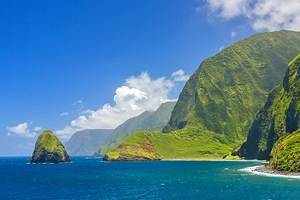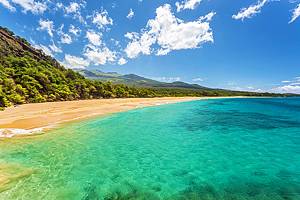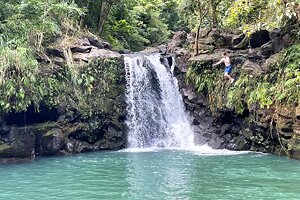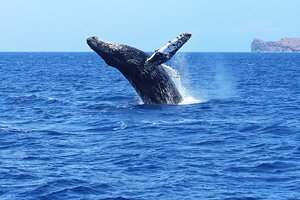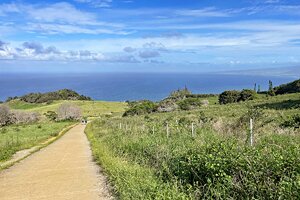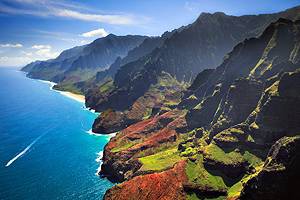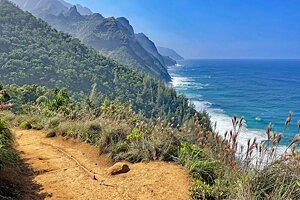Tourist Attractions in Honolulu
Welcome to Hawaii. For many, the touchdown in Honolulu is their very first point of entry to the idyllic island escape that is Hawaii. Honolulu is the most accessible city in Hawaii, with direct flights from North America, Asia, and destinations around the Pacific. In fact, it is roughly halfway between North America and Japan, thus making it a major tourist destination for people from all sides of the globe.

Visitors are drawn to Honolulu for its spectacular beaches; tropical climate; cosmopolitan energy; and easy access to raw, unspoiled nature. It's a destination as popular with barefoot surfers as it is with high-end, well-heeled luxury travelers.
Honolulu is divided into three areas: Waikiki, Downtown, and Pearl Harbor. Most visitors will hit the Waikiki peninsula, known for its splendid beaches, surf culture, gorgeous hotels, and the highest concentration of restaurants and shops in the state of Hawaii.
But Honolulu has so much to experience in all of its different areas. If you're ready to explore the very best places to visit in Hawaii's capital, plan your time here with our list of the top attractions and things to do in Honolulu.
- Enjoy the Beaches and Sights of Waikiki
- Polynesian Cultural Center
- Pearl Harbor
- Diamond Head State Monument
- Hanauma Bay Nature Preserve
- Explore Coral Reefs: Snorkeling and Scuba Diving
- Shangri La
- USS Arizona Memorial
- Learn to Surf with the Experts
- Tour the USS Missouri Battleship
- Iolani Palace
- Manoa Falls
- Lyon Arboretum
- Walk up the Koko Crater Railway Trail
- Enjoy Traditional Hawaiian Food
- Honolulu Museum of Art
- Aloha Tower
- Shop 'til You Drop at the Ala Moana Center
- USS Bowfin
- Bishop Museum and Planetarium
- Hawaiian Mission Houses Museum
Enjoy the Beaches and Sights of Waikiki
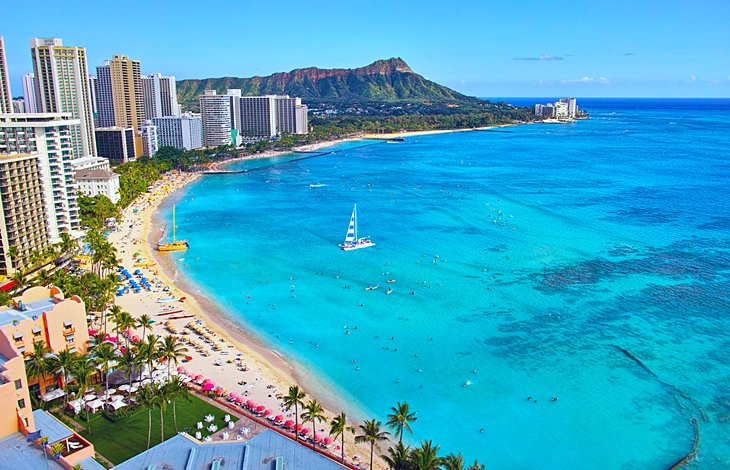
First things first — let's hit Waikiki. It's arguably the most famous section in the most famous city in Hawaii, and you'll soon learn why Waikiki has this reputation.
Look around at its buzzing scene, which centers around Kuhio and Kalakaua Avenues. The shopping in Waikiki is among the best in Hawaii. You'll also find glamorous hotels and resorts all along the beach here in Waikiki, as well as world-famous restaurants and entertainment.
Speaking of shopping, no visit to Honolulu is complete without a stop at the Royal Hawaiian Center and International Marketplace, both of which are popular gathering places for shopping and dining. You may even catch live music or a free hula show while you're here.
If you're interested in Hawaii surf culture, you've come to the right spot. Waikiki was the home of Olympic gold medalist Duke Kahanamoku, who is called the "father of modern surfing." In Waikiki, you'll find a statue of Duke, as well as the Waikiki Historic Trail, which is marked with surfboards.
Polynesian Cultural Center
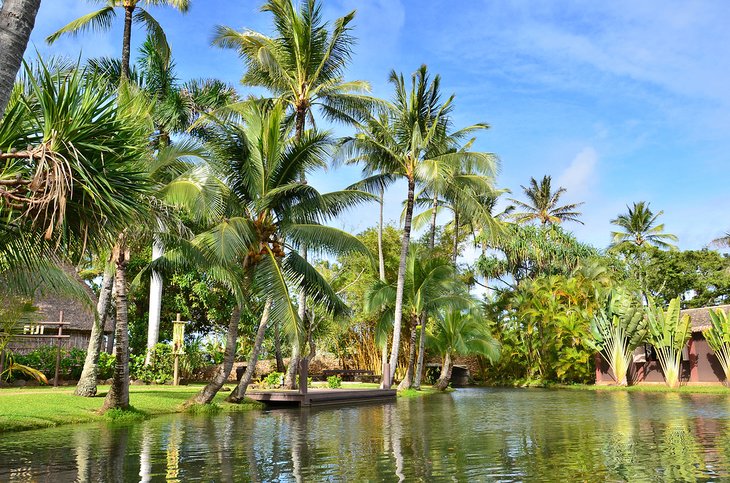
The Polynesian Cultural Center is a living cultural museum that features six villages, each dedicated to the unique culture of a different Polynesian island. Along with a traditional Hawaiian village, there are villages representing the islands of Fiji, Samoa, Tahiti, Aotearoa (Maori), and Tonga.
The top attraction at the cultural center is the Alii Luau, which offers an authentic experience for guests, complete with live entertainment. Among other popular activities are canoeing through a Tonga village, fishing with authentic Tahitian gear, and watching a traditional Maori warrior dance.
Address: 55-370 Kamehameha Hwy, Laie, Hawaii
Pearl Harbor
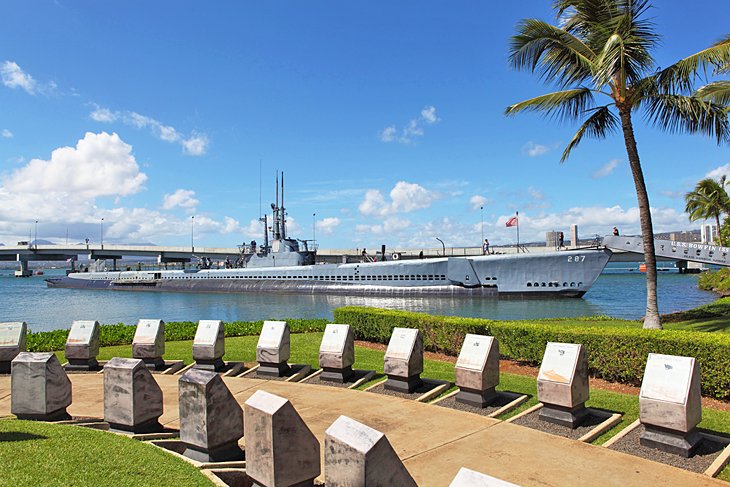
Pearl Harbor is the largest natural harbor in Hawaii, named for the numerous pearls that were once harvested from its depths. While it is still an active naval base, it is also a National Historic Landmark that houses several attractions that are part of the World War II Valor in the Pacific Monument, including memorials for the USS Arizona, USS Oklahoma, and USS Utah, as well as Battleship Row and Ford Island.
The Pearl Harbor Visitor Center, operated by the National Park Service, is free and open to the public. Here, tourists can learn about the tragic 1941 attack, as well as other aspects of the harbor's military and natural history.
This is also the starting point for tours to the USS Arizona, as well as the Pacific Aviation Museum on Ford Island. This fascinating museum includes a video presentation, historic photographs, two hangars with various WWII aircraft, as well as flight simulators that allow visitors to experience take-off and landing on an aircraft carrier.
Read More: Visiting Pearl Harbor: Attractions
Diamond Head State Monument
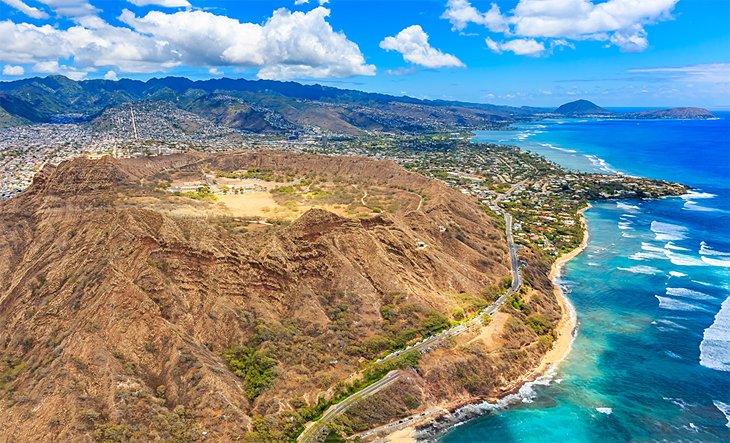
The most recognizable of Hawaii's natural landmarks, Diamond Head has a distinctive profile. Located on the eastern portion of Waikiki's coastline, this historic peak was once an important part of the island's coastal defense. Today, visitors can hike up the steep trail that rises 560 feet from the floor of the crater to the summit in just 0.8 of a mile.
At the summit of Diamond Head Crater is an enormous lighthouse built in 1917, as well as bunkers and the Fire Control Station that controlled artillery at Fort Ruger and Waikiki. For many tourists, the reward for the challenging uphill hike is the amazing panoramic view of the shoreline below. Those planning on making the trek should be well-prepared with water and sturdy footwear.
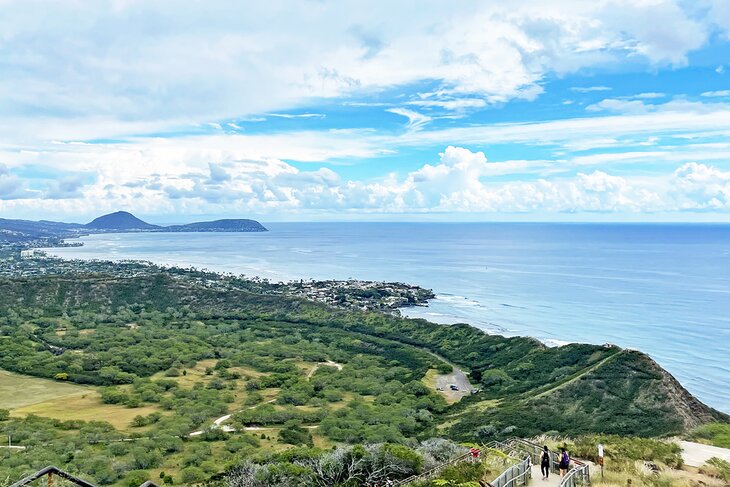
Visitors to Diamond Head State Monument need to make reservations in advance. Reservations open up 30 days ahead of time, but because this is one of the most important sites in Hawaii, slots do fill up quickly.
The best time to visit the monument is early in the day. Mid-day it can get very crowded, and the hike up to the summit can take a considerable amount of time if you get stuck behind a group of people. To maximize your time, try to get a reservation for early in the day or late in the afternoon.
After you visit the monument, you can head over to a few of Honolulu's most impressive beaches. Just at the base of the monument is Sandy Beach, known for its wide, expansive shoreline and soft, powdery sand. You'll also find the smaller Diamond Head Beach Park, which is popular among surfers. These are great spots to take a dip after spending a few hours climbing Diamond Head.
Hanauma Bay Nature Preserve
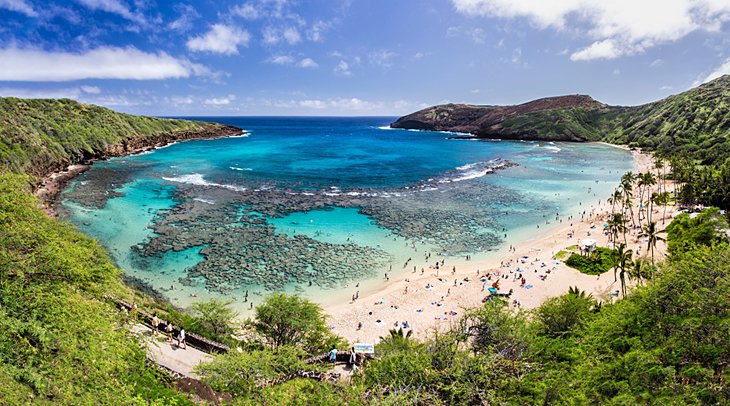
Hanauma Bay is a unique natural bay that formed within the crater of an ancient volcano. In the past, it was such a popular snorkeling destination that it became polluted and damaged from over-use. Thanks to restoration efforts that began in 1990, today the bay is pristine, and its ecosystem thrives, allowing visitors to truly enjoy the reef and its many inhabitants.
To combat damage to the fragile ecosystem and preserve the bay for future generations, the number of daily visitors is limited, and all beachgoers are required to watch an educational video about how they can ensure that they are not harming the reef and ecosystem they are about to enjoy. To learn more, visitors can also check out the exhibits at the Hanauma Bay Education Center, which contains interactive displays.
Tip: If you can't get a reservation for Hanauma Bay, consider driving to either Lanikai or Kailua beaches. These beautiful beaches are in residential neighborhoods, so are considerably quieter and less frequented than Hanauma Bay. The calm waters and powdery sand are dreamy and inviting, and the chance of spotting sea turtles is very high.
Address: Hanauma Bay Nature Preserve, 7455 Kalanianaole Hwy, Honolulu, Hawaii
Explore Coral Reefs: Snorkeling and Scuba Diving
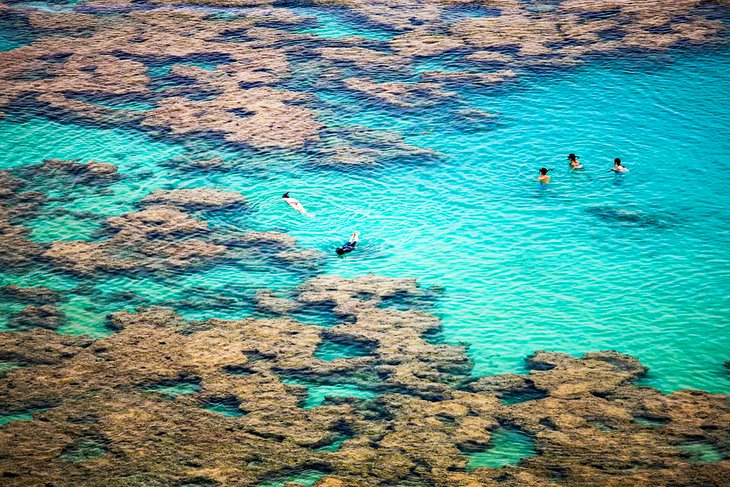
With miles and miles of coral reef just offshore and an abundance of underwater outfitters providing equipment and lessons, Honolulu is an ideal place for underwater exploration. The simplest way to explore is from one of Honolulu's public beaches, which are among the best beaches on Oahu.
Hanauma Bay Nature Preserve is an excellent option for those who would like to get a primer in how to snorkel without disturbing the fragile ecosystem of the reef.
Those who really want to reach new depths can find several good scuba diving outfitters and guides. One of the most popular snorkeling and diving spots is Shark's Cove, which fortunately was named for its shape and not its residents.
Tourists who want to see this incredibly diverse marine life without hopping in the water also have choices, including submarine tours and glass-bottomed boat tours. One of the most remarkable underwater sights is the Corsair Wreck, a WWII plane sitting 115 feet below the surface, which is most safely visited with experienced guides due to strong currents.
Shangri La
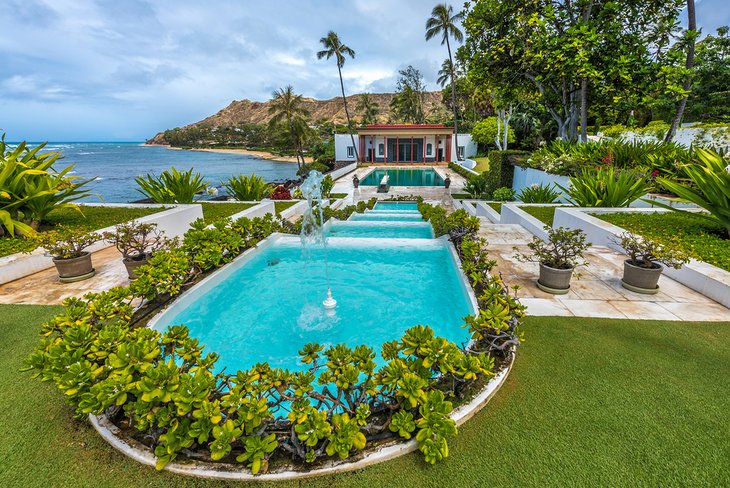
The Shangri-La museum features the complete collection of the Doris Duke Foundation for Islamic Art, a result of the benefactor's love for Islamic design and artwork.
The largest portion of the collection is its ceramic art, most notably tile work, including medieval Persian examples. Some of the most striking examples, however, are the large architectural pieces commissioned for the museum in the 1930s, created by artists in Iran, India, and Morocco.
Other works include textiles, wood, glass, and decorative objects from Spain, the Middle East, India, and Asia, with the collection totaling around 2,500 pieces.
Address: 4055 Papu Circle, Honolulu, Hawaii
USS Arizona Memorial
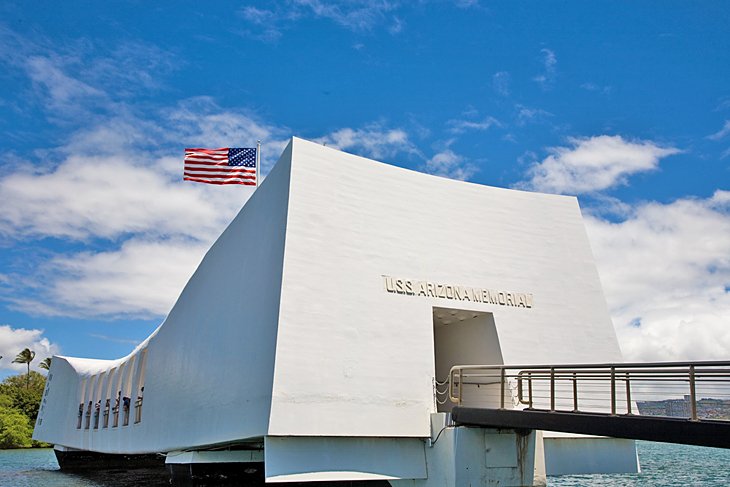
The USS Arizona Memorial is the most visited tourist attraction in Hawaii and one of Pearl Harbor's five locations that are part of the World War II Valor in the Pacific National Monument. The memorial floats above the sunken remains of the USS Arizona, which was destroyed, along with 1,177 crew members, on December 7, 1941.
Free tours of the memorial begin at the Pearl Harbor Visitor Center with a film about the attack and its historical context, after which visitors board a U.S. Navy boat and are brought to the memorial. Here, you can view the massive marble wall, which is engraved with the names of all who lost their lives when the ship was bombed.
Because of the tour's popularity, visitors need to book their reservations in advance. Reservations open up eight weeks ahead of time. Visitors are no longer able to buy tickets on arrival.
Learn to Surf with the Experts
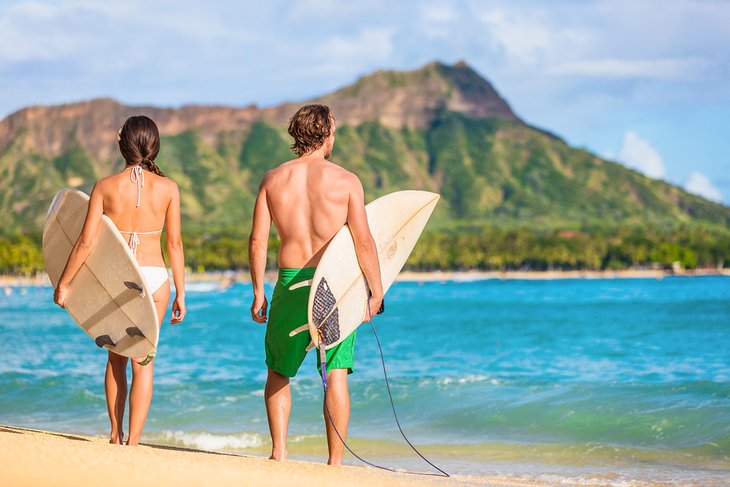
Honolulu and surfing are almost synonymous, and this is one of the best places in the world to learn to surf, with plenty of great beaches and experienced surfers to guide the way.
Waikiki Beaches are ideal places to visit for beginner surfers thanks to waves that are big enough for practice but not so large that they overwhelm the newcomer. Surfboard rentals are readily available, as are surfing schools that offer both group and solo lessons for beginners and those who want to hone their skills.
Those who are visiting in November and December can watch some of the world's best professional surfers compete in the Triple Crown. Anyone going surfing, regardless of skill and experience level, should always check the latest surf conditions before heading out, and pay attention to all warnings and postings at the surf spot.
Tour the USS Missouri Battleship
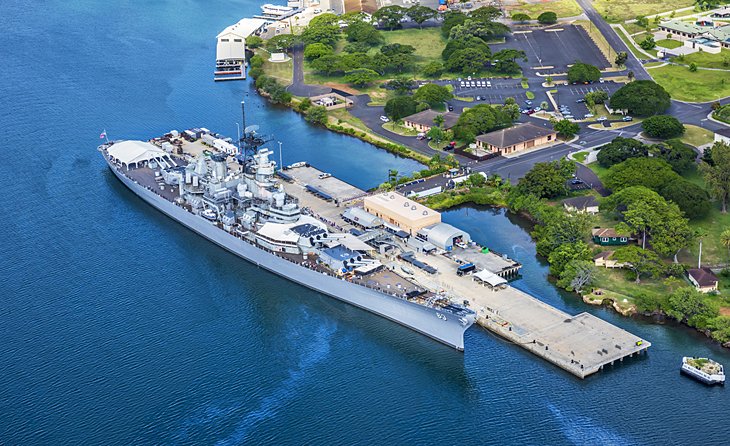
The USS Missouri, affectionately known as "Mighty Mo," gained its fame as the official site of Japanese surrender, which marked the end of World War II.
Docked at Pearl Harbor, visitors can choose from one of two tours: The shorter tour includes a look at the captain's quarters and the bridge and provides an overview of the ship's history as tourists are led along the upper decks.
The longer, more in-depth tour includes an exploration of the battleship's inner workings. This extensive guided tour not only allows visitors to see below deck into the engine room and other important posts but also provides hands-on experiences, like the opportunity to light one of the ship's massive boilers or program the old analog computers in the aft plotting room.
Tourists also get to see what daily life was like for the crew members while at sea, from the galley and sleeping cabins to recreation.
Iolani Palace
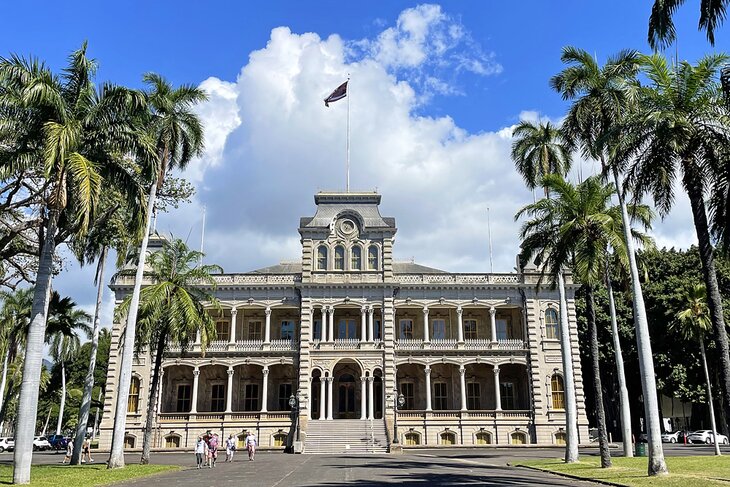
Iolani Palace is an impressive Neoclassical building that was completed in 1882 for King Kalakaua. Now restored to its former glory, it is the official residence of Hawaii's monarchy and is a great place to experience Hawaiian history. The palace was the residence of Hawaii's royalty until they were deposed by American settlers in 1893, then served as the state capitol until the modern one was constructed in 1969.
The palace was restored in the 1970s and opened as a museum in 1978. The interior has elaborately carved wood paneling made of native woods, like Koa and several imported species. The throne room still has the original carved throne and chandelier, and the façade is adorned with stained glass and elaborate decorations. The building resembles medieval battlements with embrasures, which appear somewhat odd in these surroundings. The palace is listed on the National Register of Historic Places.
Another royal abode is the Queen Emma Summer Palace, which served as the summer home for King Kamehameha IV and Queen Emma. The house has been a museum since 1913 and is operated by the Daughters of Hawaii.
Address: 364 South King Street, Honolulu, Hawaii
Manoa Falls

Hawaii may be a cosmopolitan capital, but the beauty of this sprawling city is that it is thoroughly surrounded by nature. Hiking trails abound all around Honolulu, and many of these trails even lead to dramatically beautiful waterfalls.
Manoa Falls is one of the most popular waterfalls near Honolulu, and the trail to reach them is a fan favorite among locals. Located within the Round Top Forest Reserve, the Manoa Falls Trail is a moderate trail that is less than two miles out and back.
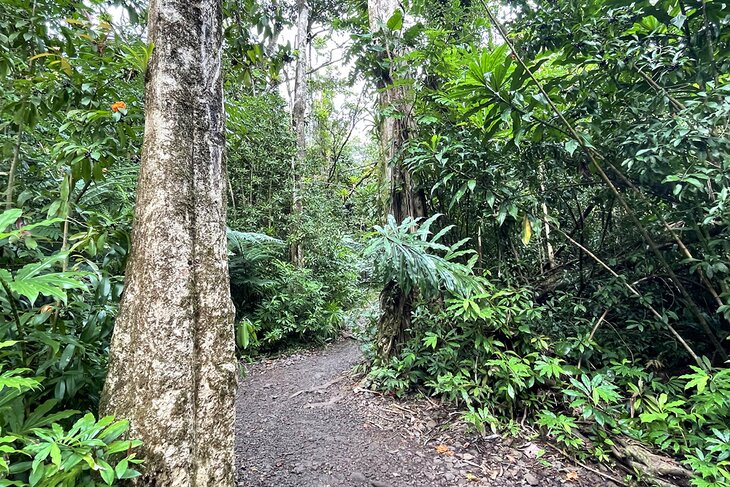
The trail is absolutely breathtaking, with serious Jurassic Park energy, as you weave up through thick, lush jungle forest complete with draped vines and the sound of running water. The hike in is mostly uphill, with an elevation gain of more than 600 feet. The reward, though, is a 100-foot waterfall at the end called Manoa Falls.
This part of Honolulu is consistently damp, with sudden bursts of showers, so expect the trail to be muddy and wet. If it has rained particularly hard, the falls will be absolutely raging. Other times, the falls are much less forceful, but no less impressive as they plunge down a sheer rock face from 100 feet above.
Read More: Waterfalls in the World
Lyon Arboretum
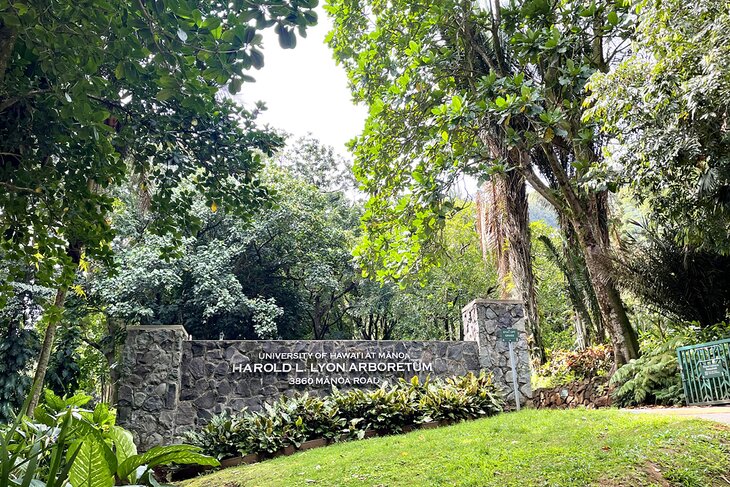
The Lyon Arboretum is a 194-acre botanical garden in a rainforest, featuring a collection of more than 5,000 tropical plants from Hawaii and Polynesia. It has one of the largest collection of palms found in a botanical garden and maintains a number of themed gardens. Among these are a herb and spice garden, a bromeliad garden, the Beatrice H. Krauss Hawaiian Ethnobotanical Garden, and many others.
The arboretum is also an active research facility, working on preserving the state's tropical forests. Tourists can take a path from the entrance of the Lyon Arboretum that leads to the 150-foot Manoa Falls, a beautiful natural site where bathing is permitted.
Another lovely garden is the Foster Botanical Garden, which features an Orchid Conservatory, a butterfly garden, and other notable fauna.
Address: 3860 Manoa Road, Honolulu, Hawaii
Walk up the Koko Crater Railway Trail
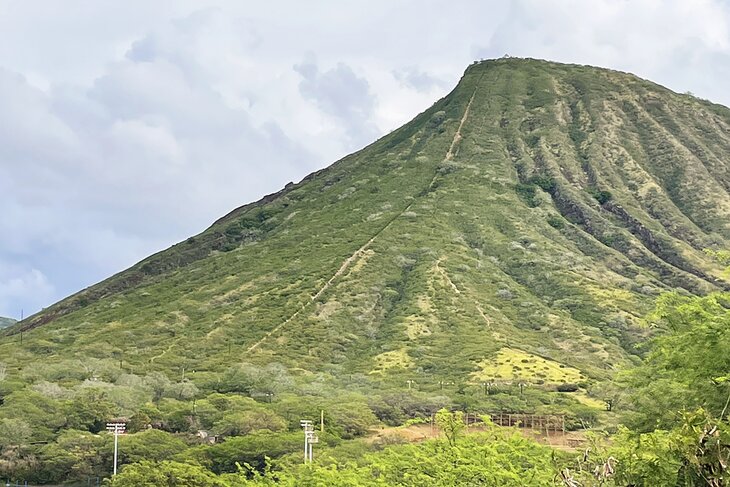
Those who are able to conquer the 1,050 steps of the Koko Crater Railway Trail are handsomely rewarded with breathtaking views of the Honolulu shoreline.
The "stairs" are actually railroad ties that were once used by a military tram that carried supplies and personnel to the lookout and bunkers during World War II. Because of this, many of the steps are very tall and steep, and the path's only level stretch is a bridge that spans a 40-foot drop.
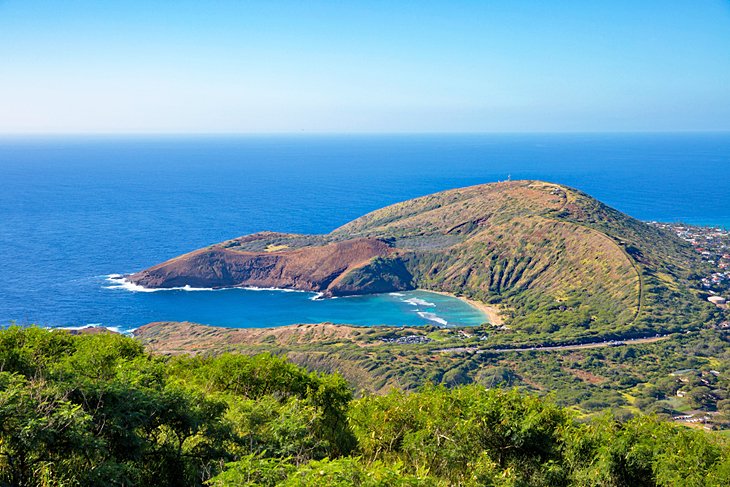
First-time visitors should consider hiring a local guide, who will give useful pointers to help prepare for the journey and provide a narrative about the site's history.
If you are not up for the climb, the Koko Crater Botanical Garden is a great activity, accessible by a two-mile path that loops through sixty acres of endangered and rare plants. A printed map and tour are provided at the gate, and there is no charge to walk among the garden's desert landscape, which includes arid plants native to Hawaii, Africa, and Madagascar.
Address: 7604 Koko Head Park Road, Honolulu, Hawaii
Enjoy Traditional Hawaiian Food
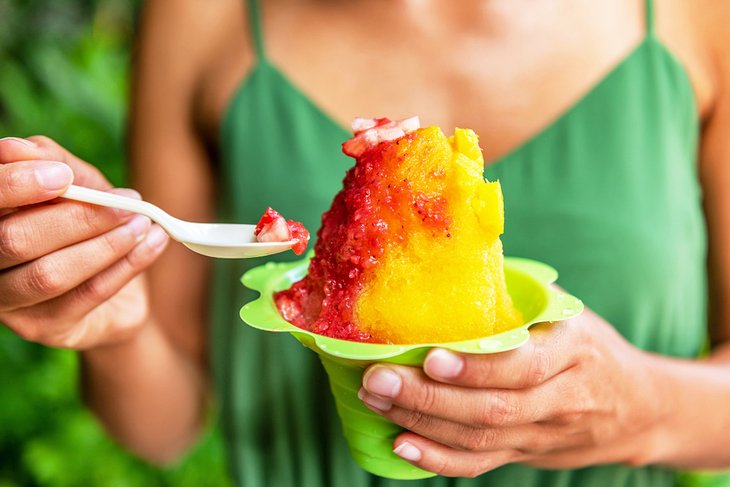
When most people think of food and Hawaii, they envision beachside luaus. Tourists can certainly find traditional luaus like the Alii Luau at the Polynesian Cultural Center, but there are plenty of other foods to explore.
One of Honolulu's most popular gastronomic institutions, despite its modest appearance, is Leonard's Bakery on Kapahulu Avenue. Here, tourists will find the city's best malasadas, a sweet doughnut with Portuguese origins that comes with or without fillings and is typically rolled in sugar.
For those who prefer a cold dessert, head to Wailua Shave Ice on Mokihana Street. Patrons can choose from over a thousand toppings and flavors and will be seriously impressed by the creative presentation.
Honolulu Museum of Art
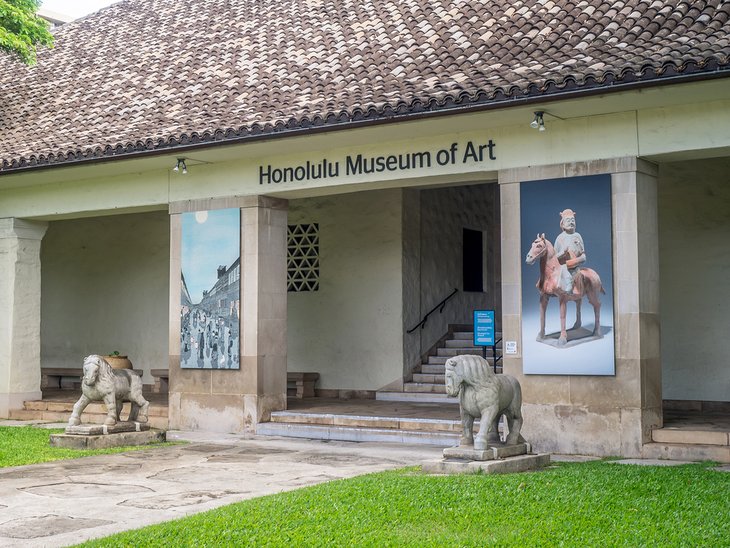
Nearly half of the 50,000 pieces at the Honolulu Museum of Art are in its Asian Art collection, emphasizing the extent that Asian culture has influenced Hawaii.
With more than 23,000 objects, this collection is best known for its representation of Japanese, Chinese, and Korean Art. Naturally, Hawaiian art is also a major focus of the museum's exhibits, with a wide range of media representing Hawaiian artists from the 1700s through today.
The museum is also home to around 18,000 examples of European and American art, including sculpture and decorative arts. This includes an extensive collection of paintings by influential 19th-century European artists including Van Gogh, Cézanne, Rodin, and Monet.
Although small, the museum's antiquity collection has some remarkable examples of ancient Greek, Roman, and Egyptian artifacts that are more than 5,000 years old.
Address: 900 South Beretania, Honolulu, Hawaii
Aloha Tower
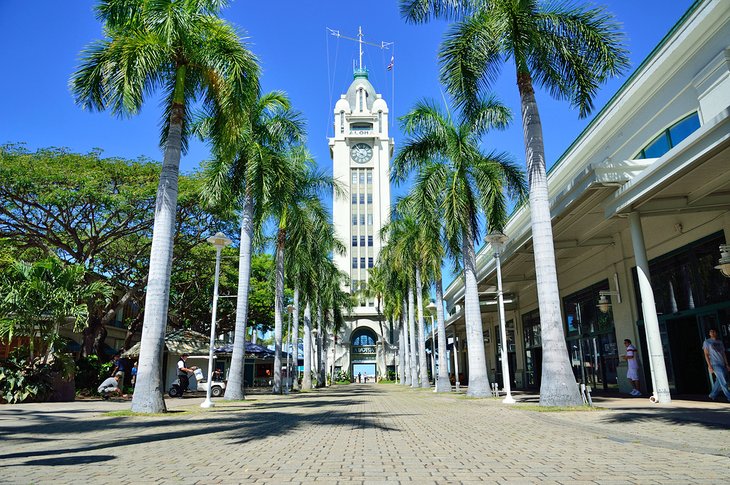
Named for the Hawaiian greeting etched in the side of the building, welcoming passenger ships arriving in Honolulu Harbor, this 184-foot-tall Aloha Tower was built in 1926 as a lighthouse. The tower has been a landmark ever since and was so important to locals that it was camouflaged during World War II to prevent it from becoming a target.
Today, it continues to greet cruise ship passengers, and the observation deck is a popular place to visit to get panoramic views of the harbor and surrounding city; access is free of charge.
The building also houses the Aloha Tower Marketplace where visitors can find shopping, food, and entertainment.
Address: 1 Aloha Tower Drive, Honolulu, Hawaii
Shop 'til You Drop at the Ala Moana Center
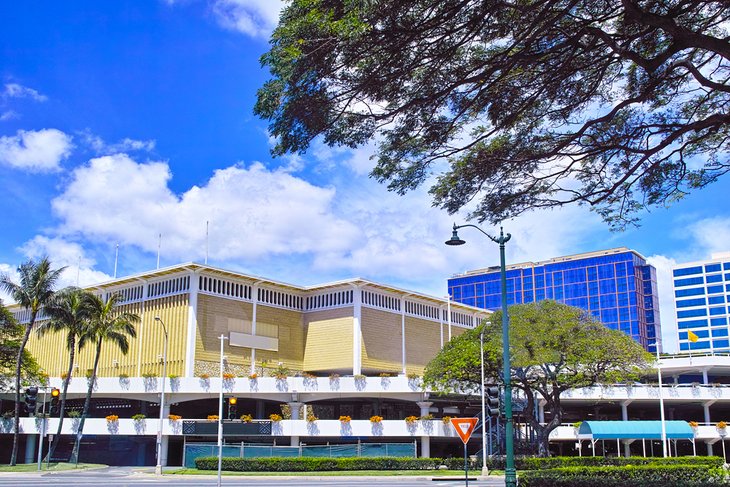
The Ala Moana Center takes shopping to the next level — four levels, in fact — and is known as the world's largest open-air shopping center. It is home to more than 350 stores offering a range of products, from souvenirs to clothing and specialty products. Shoppers will also find plenty of food vendors, as well as live music, making it easy to spend an entire day here.
For an authentic local shopping experience, visit the KCC Farmer's Market on Saturday mornings, hosted by the Kapiolani Community College (near Diamond Head State Monument). In addition to local produce, shoppers will find a wide selection of local honey, baked goods, fresh flowers, and artisan goods.
Address: 1450 Ala Moana Blvd, Honolulu, Hawaii
USS Bowfin
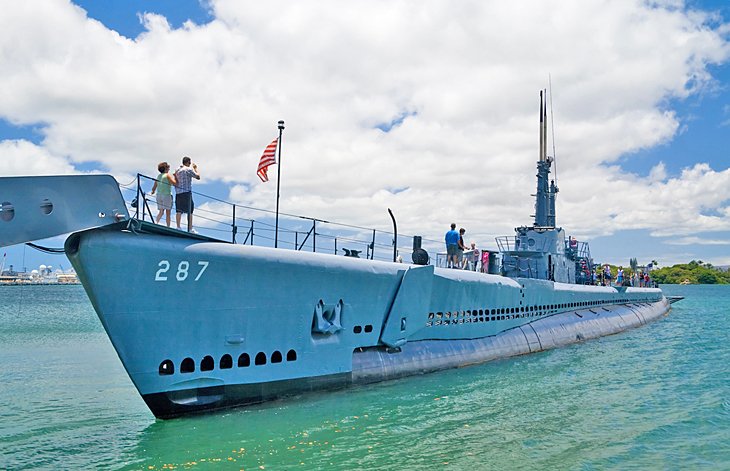
The USS Bowfin and the USS Bowfin Museum, located in Pearl Harbor, are dedicated to the memory of the 52 U.S. subs and their crews that were sunk during WWII. The Bowfin, which was built and put into service during WWII, destroyed 44 Japanese vessels during the war.
Visitors can explore the submarine at their leisure, stopping to hear about specific equipment and rooms from well-informed volunteers who are stationed throughout. In addition to getting a look at daily life on a submarine during both war and peacetime, tourists can experience what it's like to peek through a periscope.
At the USS Bowfin Museum, visitors can learn about the history of submarines through exhibits, models, and artifacts.
Address: 11 Arizona Memorial Drive, Honolulu, Hawaii
Bishop Museum and Planetarium
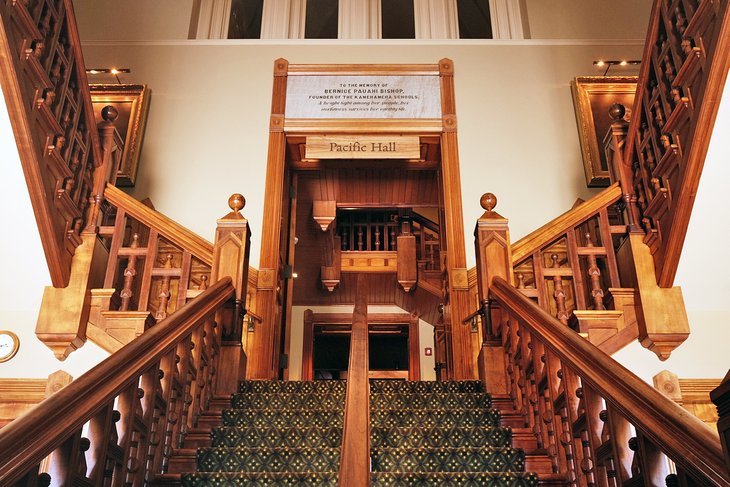
Bishop Museum, Hawaii's state museum, contains one of the best collections of Polynesian arts and artifacts in the state.
The museum's permanent exhibits include kahilis, a collection of the feathered royal standards that served as flags for past royalty, as well as Hawaiian feathered capes and helmets. The museum's first floor is dedicated to Kai Ākea, the world of Hawaiian legend, where the ancient gods exist.
Other areas of the museum focus on the region's natural history, including traditional occupations like whaling. Also of note is a large collection of artifacts from the South Pacific, and objects brought by the Japanese, Chinese, Filipino, Korean, Portuguese, German, and other early settlers.
The museum is also home to the J. Watumull Planetarium, which presents a variety of shows that explore the Hawaiian night sky and other celestial topics, as well as films about dinosaurs and Polynesian culture.
Address: 1525 Bernice Street, Honolulu, Hawaii
Hawaiian Mission Houses Museum
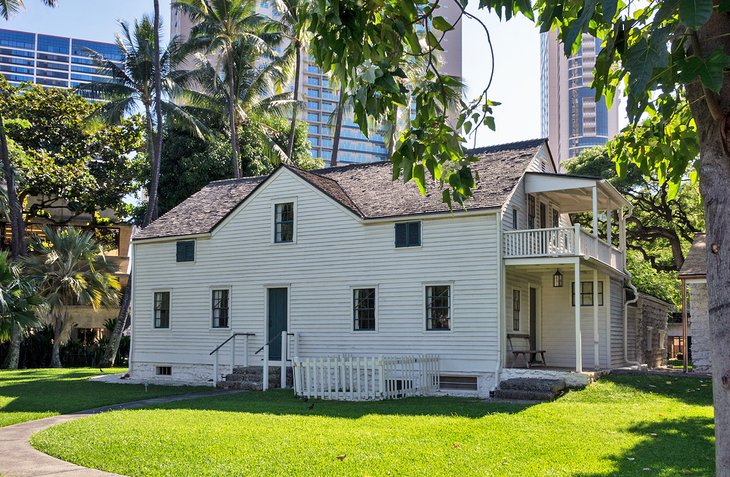
The Hawaiian Mission Houses museum maintains three historical properties from the early 19th century. These restored homes, listed on the National Register of Historic Places, document the lives and living conditions of early missionaries. They are the oldest western-style buildings still standing.
The properties include the Mission House (1821), the printing works (1841), and the Chamberlain House (1831), built by Levi Chamberlain for himself and his family of eight when they came to Honolulu from Vermont in 1823. It was here that books in the Hawaiian language, used by missionaries as a written language, were first printed.
Address: 553 South King Street, Honolulu, Hawaii
